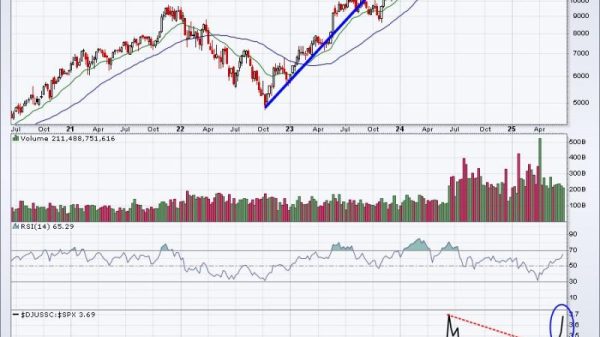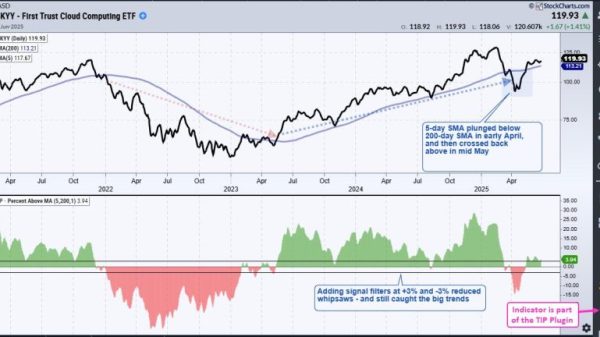Markets and supply chains across the commodities spectrum have taken hits from factors like the COVID-19 pandemic, inflation and Russia’s war in Ukraine. Base metal copper is no exception, and now some analysts are once again calling for peak copper in much the same way as others have voiced concerns over peak oil or peak gold.
After the 2008 recession, copper surprised everyone with its rapid ascent — propelled by China’s stockpiling program, it hit record-high prices. In 2011, concerns that peak copper was on the horizon were exacerbated by the rapid industrialization seen in China. As the Asian powerhouse’s copper demand skyrocketed, copper stockpiles had a tough time meeting the increased demand.
That raised the question of when the market will reach peak copper, which is a time when global copper supply will enter a terminal decline. The predictions surrounding the timing of peak copper were are all over the map, ranging from 2020 to 2100.
While it’s clear now that 2020 wasn’t the peak for copper supply, there are still signs that a tight supply scenario — and higher prices — is on the horizon. Unlike peak oil, which was reversed with the help of fracking, no such technological advancements are available for copper production, and there are no viable alternatives for the metal across its many industrial uses.
What is China’s role in copper demand?
In the past decade, strong growth from China has resulted in accelerated copper demand. In a market already known to operate on thin margins, Chinese demand quickly created a copper supply deficit. The potential for other emerging markets to enter periods of rapid growth is also fueling speculation that increased demand for copper has only just begun.
Furthermore, interest in copper as an asset class has been piqued, and prices are now being impacted by investment demand in addition to the metal’s traditional physical demand. Copper is deemed a strategic asset in China, and it provides a way for market participants to diversify from the US dollar and US treasuries.
In 2011, the tightening balance between copper supply and demand resulted in a rapid price rise. Copper hit a low of US$2,910.09 per metric ton (MT) in January 2009, then surged to US$7,826.40 by April 2010; it hit what was then an all-time peak of more than US$10,097 per MT in February 2011.
Copper prices fell over the following years, and traded under the US$6,600 level for much of the second half of the 2010s. However, a looming supply crunch, exacerbated by pandemic-related supply disruptions, pushed prices up above US$10,700 in Q2 2021. Continued supply chain disruptions and historically low stockpiles amid rising copper demand eventually sent copper to its current highest all-time price of US$11,067.20 in March 2022.
China’s slow economic growth amid ongoing COVID-19 lockdowns and a falling yuan placed downward pressure on global copper prices in late 2022, with the red metal trading below US$7,716.18 per MT by mid-October.
However, that price slump was short-lived as copper’s outsized role in the global transition to cleaner energy and its undersupply challenges combined to drive it upwards. For much of Q1 2023, copper prices have managed to push past the US$8,500 level, although they did move downwards in Q2.
“Copper typically is used as a construction metal for wiring for building, wiring for machinery and what not, but if we look at the decarbonization net zero energy transition trend, copper is the new oil,” Al Chu, who manages the BNY Mellon Natural Resources Fund, told CNBC.
Going forward, a long period of supply instability is still expected in the copper space, and that has the potential to send prices higher in the medium to long term. “It’s a question of when to become bullish on copper, not if,’ Julius Baer analyst Carsten Menke said.
Is there a shortage of copper in the world?
While copper demand is expected to rise, supply may not keep pace. This is resulting in speculation that the world is on the path to peak copper. However, a 2019 report out of the University of Iceland suggests recycling of scrap will help delay peak copper.
The Copper Development Association pegs the current known worldwide copper ore resources at nearly 5.8 trillion pounds, of which only about 0.7 trillion pounds, or 12 percent, have been mined throughout history. Plus, nearly all of that mined copper is still in circulation, as the red metal’s recycling rate is higher than that of any other engineering metal.
So why is the market faced with a supply deficit? The copper supply deficit isn’t due to a lack of available copper to mine; it was caused by complications in bringing high-quality copper to the market.
In a 2020 interview with veteran investor and speculator Rick Rule, Robert Friedland of Ivanhoe Mines (TSX:IVN,OTCQX:IVPAF) said, ‘The copper price probably needs to double its current price for the average low-grade copper porphyry in Peru or in Chile to become viable.’ At the time, the red metal was around US$6,327 per metric ton.
Similarly, back in 2019, Reuters reported, ‘The copper industry has suffered from years of underinvestment, and it is now working feverishly to develop new mines and bring fresh supply online as the electrification trend envelops the global economy.’ Expected global copper shortages have major end users of copper worried about the security of their supply chains.
It’s worth noting that copper exploration and mining require a great deal of capital investment. The last major investment cycle was in the 1970s, and although we are currently in a cycle of increased exploration spending, new discoveries are few and far between, and have not been enough to compensate for the decline in ore grades from the larger, older mines.
The other big factor impacting new supply to the market is the time it takes to get a new mine into production. First, an economically viable reserve has to be discovered, and then this discovery has to be developed. Many projects don’t even make it past this point. Often, by the time a mine is about to be constructed, the metal’s price collapses and the project is abandoned.
What’s more, miners that make it past the point of exploration and into construction and mining are faced with a multitude of potentially time-consuming delays, including everything from equipment shortages to permitting problems.
Karen Norton of Refinitiv agreed: “Further disruptions cannot be ruled out in Peru, especially if there are further local community protests. Also, among the handful of projects that are ramping up, some may take longer than foreseen.”
How did COVID-19 affect copper supply?
The worldwide COVID-19 crisis further impacted the copper supply crunch. Back in July 2020, Eurasian Resources Group CEO Benedikt Sobotka noted that the impact of the pandemic had shrunk the mine project pipeline due to lockdown-related delays and capital expenditure guidance cuts from copper miners. Sobotka warned that the supply impact of COVID-19 will extend far beyond 2020.
Speaking at a webinar that same month, Bruce Alway, director of metal research at Refinitiv, said, ‘(There are) sizeable losses for both copper and zinc at the mine level, which at the peak saw around 110 operations affected.’
Moving ahead, a recent S&P Global report shows that global copper demand is expected to nearly double over the next decade to reach about 50 million metric tons by 2035, further exacerbating the looming supply shortage.
‘Copper is the metal of electrification and absolutely essential to the energy transition,’ said Daniel Yergin, S&P Global vice chairman. ‘Given the global consensus for Net-Zero Emissions by 2050, it is critical to understand the physical materials required for achieving that ambition. The world has never produced so much copper in such a short timeframe as would be required. On current trends, the doubling of global copper demand by 2035 would result in significant shortfalls.’
ERG Senior Market Analyst Piotr Ortonowski reiterated this sentiment at the 2022 Fastmarkets copper conference in Barcelona. “The bottom line is that if we want to have an energy transition, we need copper — it is vital for us,” Ortonowski said. “And judging from the level of physical inventories today, supply is already falling short of demand.”
Russia’s war in Ukraine is further shining a light on Europe’s need to push forward with its break from a reliance on fossil fuels and and its transition to renewable energies.
So is peak copper really coming? Perhaps not yet, but it’s clear the supply and demand situation could remain tight, leaving a market that’s potentially ripe for investment.
Securities Disclosure: I, Melissa Pistilli, hold no direct investment interest in any company mentioned in this article.





























